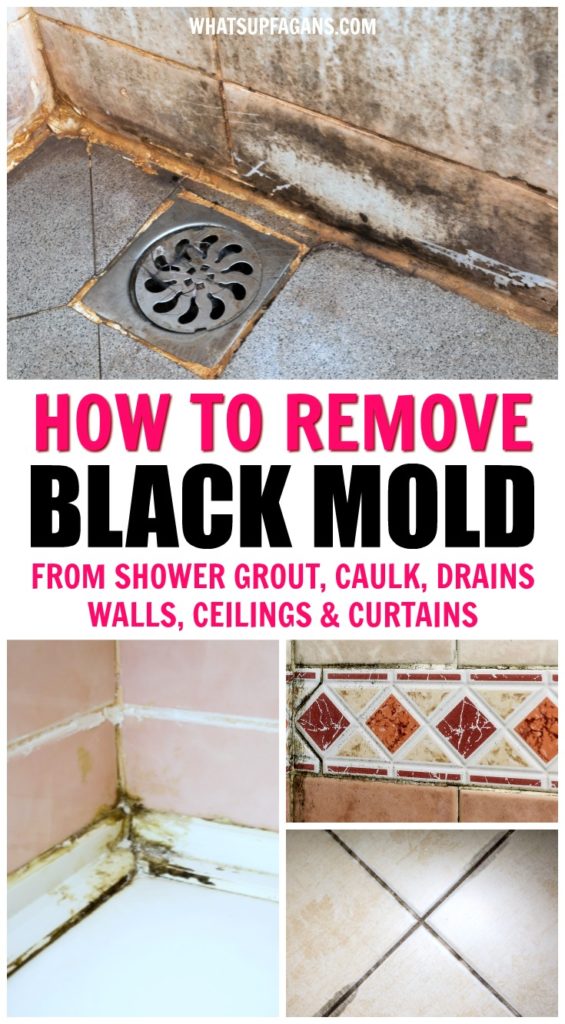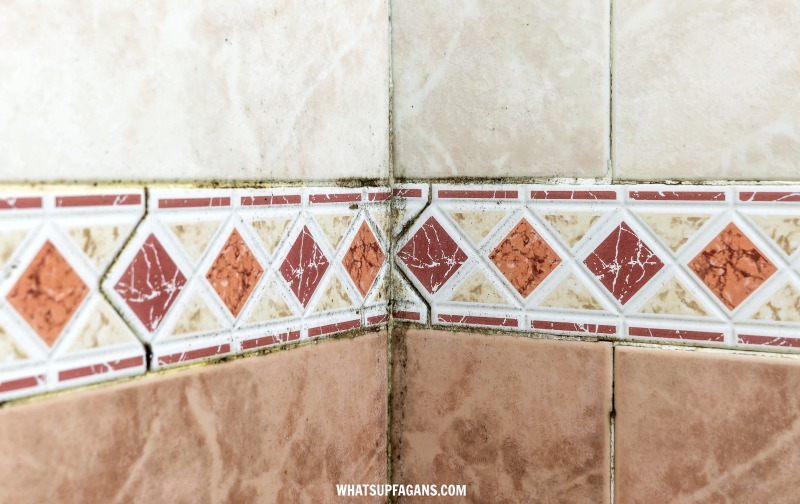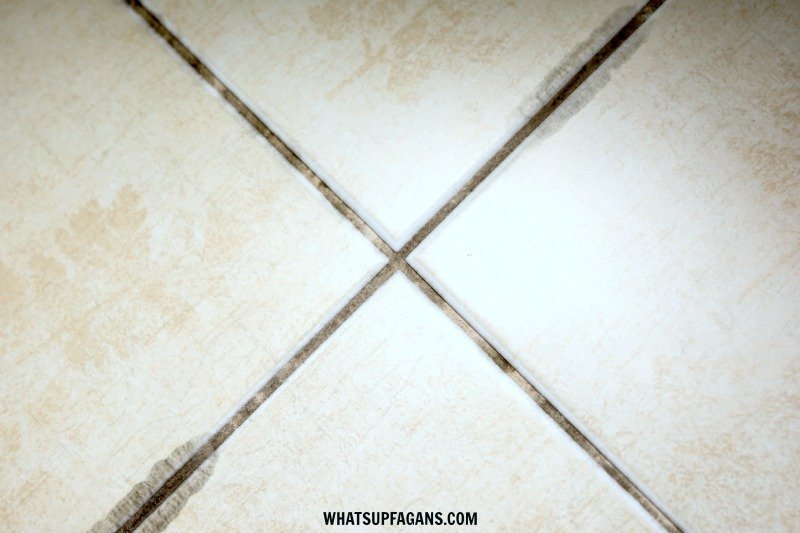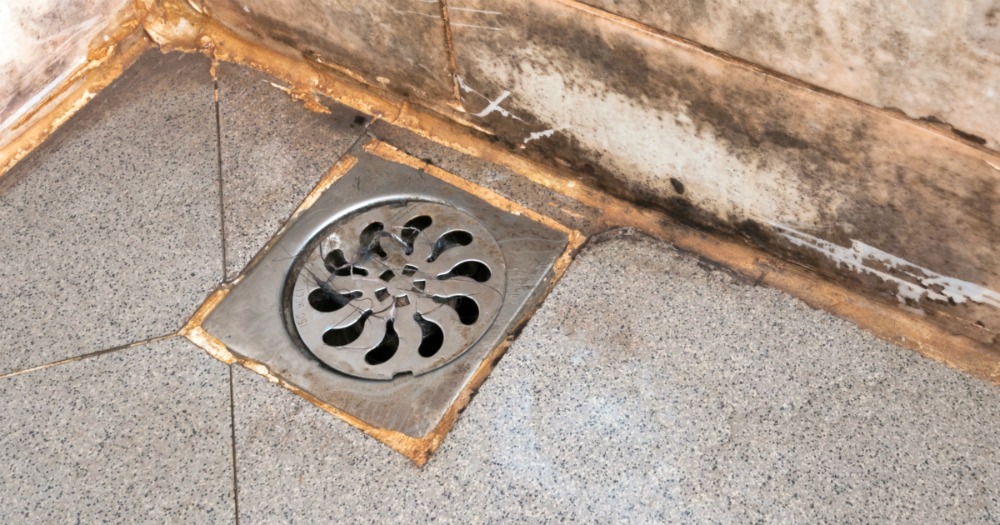How To Clean Black Mildew From Shower
If you want to raise great kids and enjoy a cleaner home, then join more than 15,000 others who receive helpful home and family tips straight to their inbox each week. As a thank you for joining you'll receive several FREE household printables and other great perks too! Sign up here!
If you want to raise great kids and enjoy a cleaner home, then join more than 15,000 others who receive helpful home and family tips straight to their inbox each week. As a thank you for joining you'll receive several FREE household printables and other great perks too! Sign up here!

Got some black mold in showers? Before you freak out about black mold in shower health risks, here's what you need to know about it and how to remove black mold from showers – shower caulk, shower grout, behind shower tiles and shower walls and shower ceilings, on shower curtains, and even in shower drains.
A while ago, I shared a little hack on how to remove mold from shower caulking that has been super popular! It's apparently a very common problem!
That post has received a lot of feedback from people about black mold, what it is, and what really kills it and what really doesn't.
Hate cleaning but love a clean house? Pick up this printable Spring Cleaning Bundle and you'll be able to clean it all without feeling overwhelmed!
Because, you know what? Many people were right. I hadn't really removed the mold in the caulking, but had just bleached it, because it most certainly came back after about 9 months or so!
But, the caulking is NOT the only place that black mold grows in a shower! Black mold grows on the shower ceiling, on the shower wall, around the shower drain, on a shower curtain, and on shower grout.
I wanted to explore these other areas that grow black mold in a shower with you today! I know it's super fun, right? But, I'd love to help you avoid any dangerous health risks that might come from letting that black mold in your shower continue to stay there!
Black Mold in Shower
First, let's talk a little bit more about why black mold grows in showers and why black mold in showers is dangerous and the health risks associated with black mold in the shower.
What Causes Black Mold in Shower?
Mold loves to grow in warm, damp and humid places, which is most certainly the conditions that happen in showers!
If there is a mold problem in your home, you need to clean up the mold AND fix the water problem that is causing the mold to grow. That's why it's important to control humidity in your home, always use the bathroom ventilation fan, leave the bathroom door open (if you can), and/or open the bathroom window.
Black Mold in Shower Health Risks
Thankfully, due to the way bathrooms and showers are constructed today, the black mold you see in your shower is less likely to be the really bad stuff the "toxic mold" or "deadly mold" known as Stachybotrys chartarum. This is because your shower areas and surfaces don't have cellulose (found in things like wood, fiberboard, lint, paper, and dust) which is required for the really bad type of mold to grow. Tile, ceramics, and cement-fiber backer board all make Stachybotrys less likely to grow.
But, it doesn't mean the black mold you see in your shower is"safe" for you either!
You can request some laboratory testing for it, but it isn't really that necessary and it can be very expensive.
Many people experience no physical symptoms from being exposed to black mold in showers, but those who have asthma, weakened immune systems, or sensitivities or allergies to mold can experience some physical symptoms from the exposure. These include things like:
- sneezing
- itchy eyes
- scratchy throat
- trouble breathing
- headache
- skin irritation
- yeast infection
- athlete's foot
- fever
- rashes
- chronic fatigue
- depression
Even if you don't show symptoms now, repeated and prolonged exposure can lead to a mold sensitivity over time and affect your health.
For many people though, simply the sight of mold in their shower makes them annoyed! It isn't pretty to see and it isn't healthy.
Anytime you encounter a mold growing in your home, it is best practice to just get rid of it as soon as possible.
Just be aware that mold damages what it grows on, so the sooner you attack the mold the better!

So let's get rid of it!
How to Get Rid of Black Mold in Shower
How to Get Rid of Black Mold in Shower Caulking
I wrote a whole post about removing black mold from shower caulking, though my bleach method has been critiqued for not actually doing more than removing the stain and color of the mold. And the mold did come back 6-9 months later.
You can see my video tutorial about how I did it though:
This is because bleach is no longer considered to be thebest way to remove mold. It is only effective if the mold is on a non-porous material like tile, bathtubs, glass, and countertops. It doesn't reach the mold growing underneath the surface. Also, bleach can damage the materials it is used on as it's a harsh, corrosive chemical. The fumes are strong and harsh and it must be handled with gloves.
But, it does do a great job at removing the mold stains, but the mold isn't truly killed.
You can instead use vinegar, baking soda, ammonia, oxygen bleach, borax or hydrogen peroxide.
I, however, have not been able to find many tutorials on how to use these products specifically for cleaning moldy caulking in bathrooms, so if anyone has tried using them, with success, I'd love to know! I tried making a paste of water and OxiClean and slathered it onto the moldy caulking, but it did absolutely nothing. It dried out shortly after application and didn't remove the mold or the stains at all.
One of the BEST things you can do to remove black mold in caulking is to remove the caulking altogether and apply new high-quality caulking. This isn't very time-intensive, but does require you to let it dry properly before using your shower again. This is important because a good caulk will help prevent water damage and mold from happening behind your tile and shower walls!

I couldn't replace our caulking when I did my tutorial as we were renting the apartment that had the moldy caulking. I also understand that it is more expensive to replace than to clean, but know that a small step in prevention can save you a lot of work later down the line! If you do live in an apartment, be sure to report moldy caulking or any mold found in your home to the proper apartment management staff.
How to Get Rid of Black Mold in Shower Grout
I also previously wrote a post about the best way to clean grout by using and comparing Magic Eraser on grout, baking soda to clean grout, and a steam cleaner for grout. They all worked fairly well!
I didn't at the time have black mold growing in my shower grout though.
One of the best things you can do when battling black mold in shower grout is to replace the grout completely and re-grout. Mold often seems to grow on grout as it starts to age and crack as it is porous.
No, this is likely not (I've never done it) an easy or cheap process, but this will ensure the grout is indeed mold-free. Just be sure to use top-quality grout!
Plus, you may also discover a water issue behind the tile or grout that you can better address so as to prevent it from growing again.
But, if your grout still looks like it's in good shape, then try one of the following methods:
- Bleach (unless grout it colored or your tile is too sensitive). Scrub bleach into the grout with a stiff bristle brush, leave for 30 minutes, then rinse with warm water, repeating as necessary.
- Distilled white vinegar. Spray it on, let it sit for 30 minutes, then scrub the vinegar in the grout, re-spray and leave for another 30 minutes. Then rinse with warm water. Repeat as necessary.
- Baking Soda Paste. Use the method I did to clean grout with baking soda but let sit for 10 minutes before rinsing and repeat as necessary.
- Baking soda and hydrogen peroxide mixture. Use the above baking soda paste and apply, but then spray or pour hydrogen peroxide over it, scrubbing the fizzy paste. Rinse with water and repeat if needed.
Once you remove black from shower grout, be sure to use a squeegee to remove excess moisture and water from your tiles and grout after showering to prevent it from coming back.
How to Remove Black Mold Behind Shower Tiles orBlack Mold Behind Shower Wall
If you are removing tiles and discover black mold behind shower tiles, it can be extremely scary and unnerving! This is likely because you may be facing some hefty costs to replace the sheetrock, insulation, tile, and maybe even the studs behind your shower. I would definitely get a professional opinion on what is best to do if you are not expert at this type of thing! You want to fix it properly.
That's why it is important to use a moisture meter to see if there really is water and mold building up behind shower tiler.
If you see mold, it is recommended to do a 50/50 water and bleach wash (do not scrub though, as that can release the mold spores in the air!) first. Spray it really well and let it completely dry.
Then spray the area with Lysol or a vinegar, baking soda, or borax mix and let dry.
It is best then to apply something like Kilz, an oil-based primer to prevent mold from growing there again.
How to Remove Black Mold in Shower Drain
Shower drains contain cellulose materials (the stuff the back black mold loves to grow on!) via soap scum, body hairs, and oils and lots of moisture so they can be a breeding ground for black mold growth!
It's important to keep drains open and clear of cellulose materials. Treat the drain with vinegar and/or baking soda and water solution periodically to keep it clean and prevent mold spores from developing.
You can then follow the tutorial found on this page for a good method of removing black mold from a shower drain, or you can try this simpler method.
The important thing is to NOT pour bleach down your drain, and to take your time with the process.
How to Clean a Black Mold Shower Curtain
I am going to state the obvious and tell you that a simple way to get rid of black mold on a shower curtain is to just get rid of the shower curtain and buy a new one! They are not very expensive usually and ensure there is no more mold in your shower.
But, if you don't like to replace items (good for you!), can't afford to do so, or like a cleaning challenge, then there are some tutorials for removing black mold from shower curtains. We've been able to remove some pink and black mold from our shower curtains through the years and it isn't all that difficult.
If you have a plastic or vinyl shower curtain liner, simply use a baking soda and water mixture and gently scrub it off (easier if you remove it from the shower rod first) then rinse with water. Then you can spray some vinegar on it to help inhibit more growth and remove any watermarks.
If you have a cloth or fabric shower curtain or shower liner, you will do something similar. I suggest heading to this post or this post for a good tutorial on how to do it indoors and outdoors
Lastly, you can throw your shower curtain into the washing machine with some laundry detergent and 1/2 cup baking soda (or borax), run on the gentle cycle (hang back up to dry). Or I've done it with just a straight vinegar wash before too.
How to Clean Black Mold in Shower Ceiling
Like all of the other molds, you again need to fix the cause of the mold (check your bathroom fan), before you tackle the mold itself or you'll just have to do it again soon!
If it is on porous materials like a popcorn ceiling, wood, drywall, and so on, you'll need to remove that portion of the ceiling and replace it.
If it isn't severe, and your ceiling is made of a non-porous material, and you are looking to remove the black mold in shower ceiling, you'll want to:
- Open the window, turn OFF the fan, put on rubber gloves, and goggles. Use a ventilator mask if you have one.
- Grab a step stool or ladder.
- Remove the paint.
- Clean the ceiling. Mix a solution of 2 Tbl Borax, 1/4 cup vinegar, and 2 cups hot water and apply to the spot.
- Scrub with a scouring sponge.
- Rinse sponge often or use new sponges throughout the process.
- Repeat as necessary.
- Once removed, spray again with the mold killing solution.
- Let dry.
- Sand the shower ceiling down.
- Repaint the shower ceiling with a waterproof paint.
And that should do it!
I know that finding black mold in showers can be annoying and overwhelming, especially if it keeps coming back. I hope that these tips and tutorials will help you conquer your black mold in bathrooms issue for good!
If you have a different method for doing something, I'd love to hear about it in the comments! Share your knowledge with others!
For more great bathroom cleaning tips, be sure to check out the following posts:
- 10 Ways to Clean Your Bathroom with Baking Soda
- How to Clean Porcelain Sink
- How to Remove Rust Stains from Porcelain Stains
- How to Clean Shower Heads
- How to Clean Bathtub with Bar Keepers Friend
- How to Remove Hard Water Stains
- How to Clean Bathroom Faucets
How To Clean Black Mildew From Shower
Source: https://www.whatsupfagans.com/black-mold-in-showers/
Posted by: nelsondroutich.blogspot.com


0 Response to "How To Clean Black Mildew From Shower"
Post a Comment